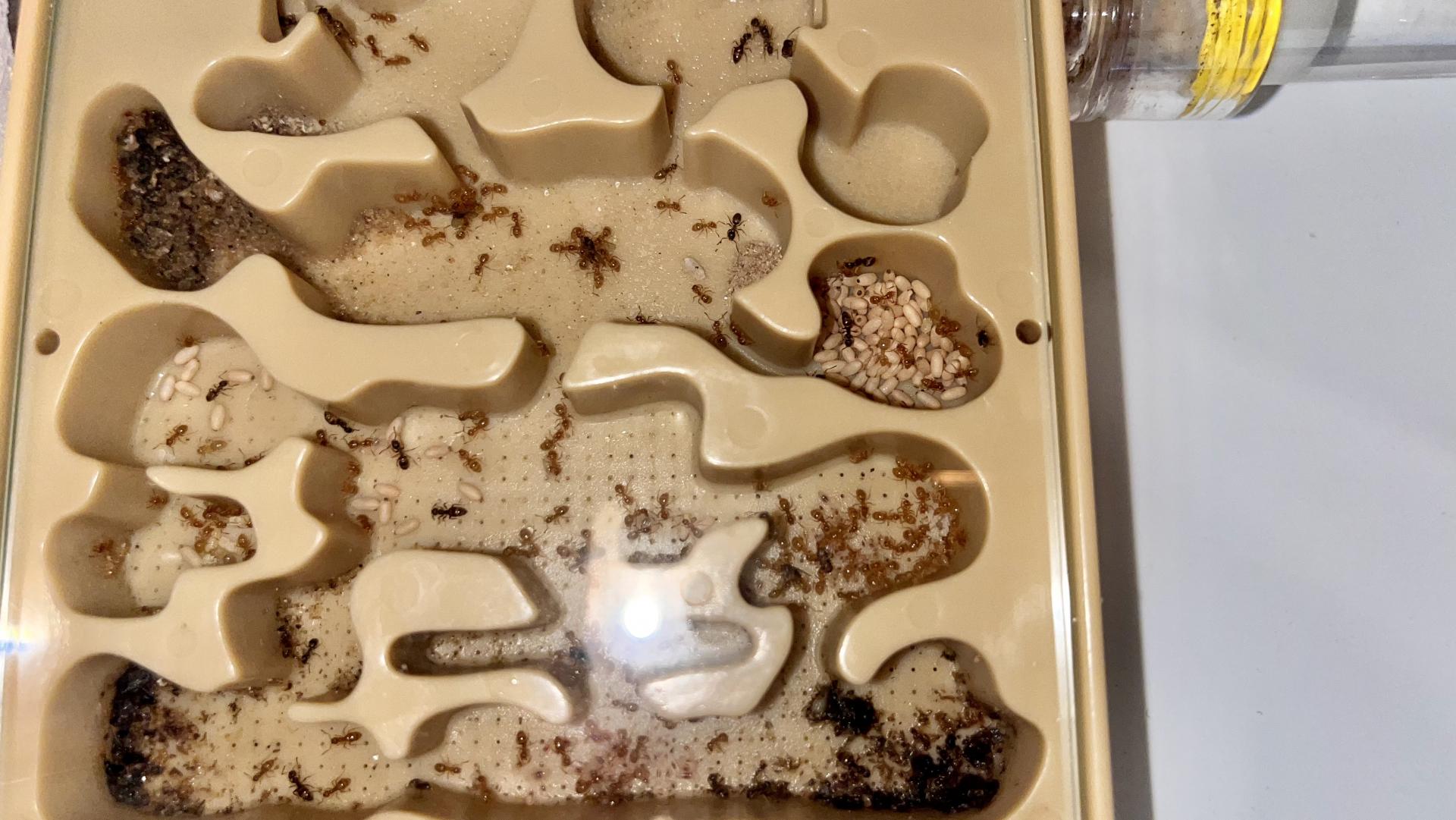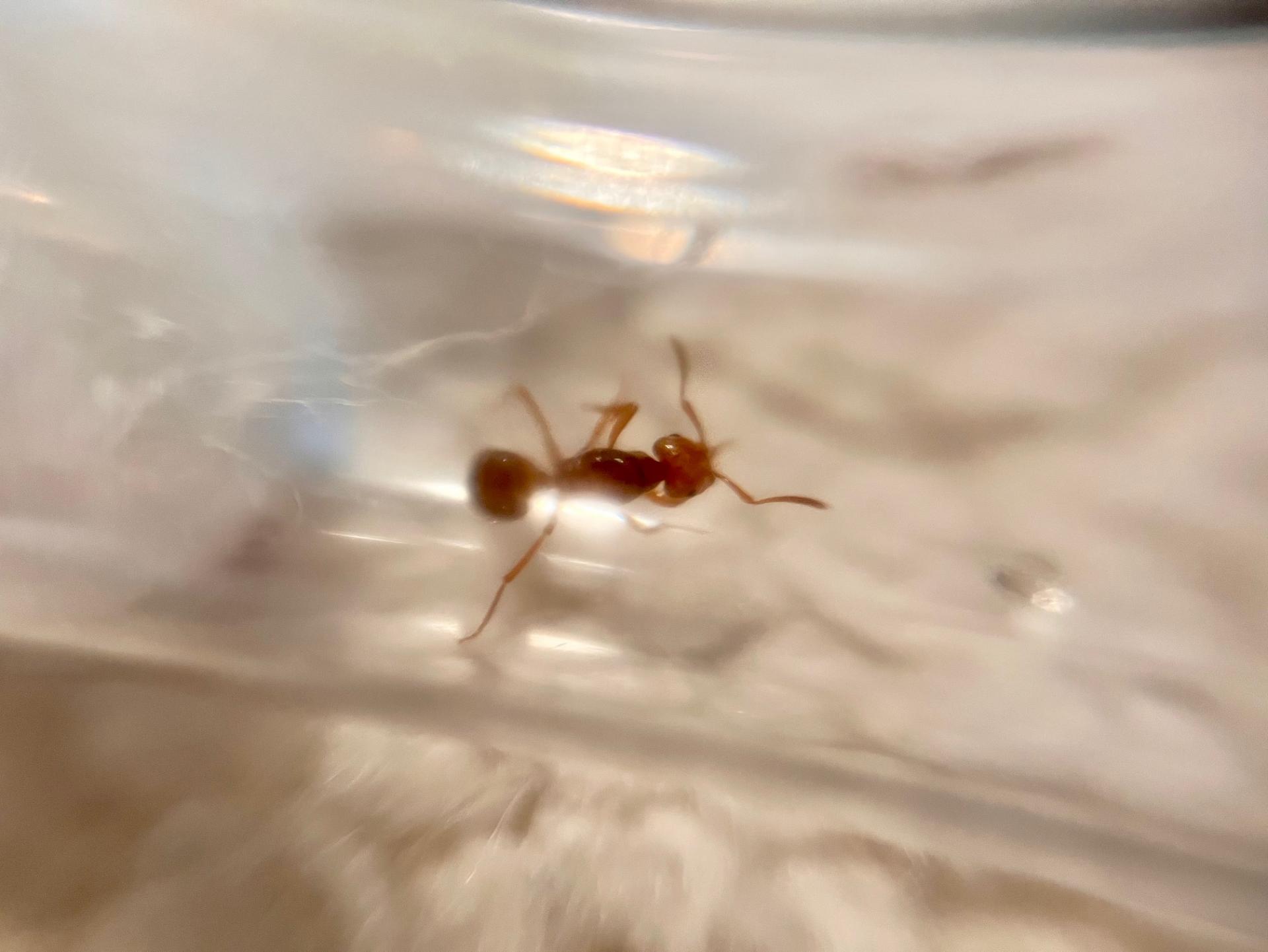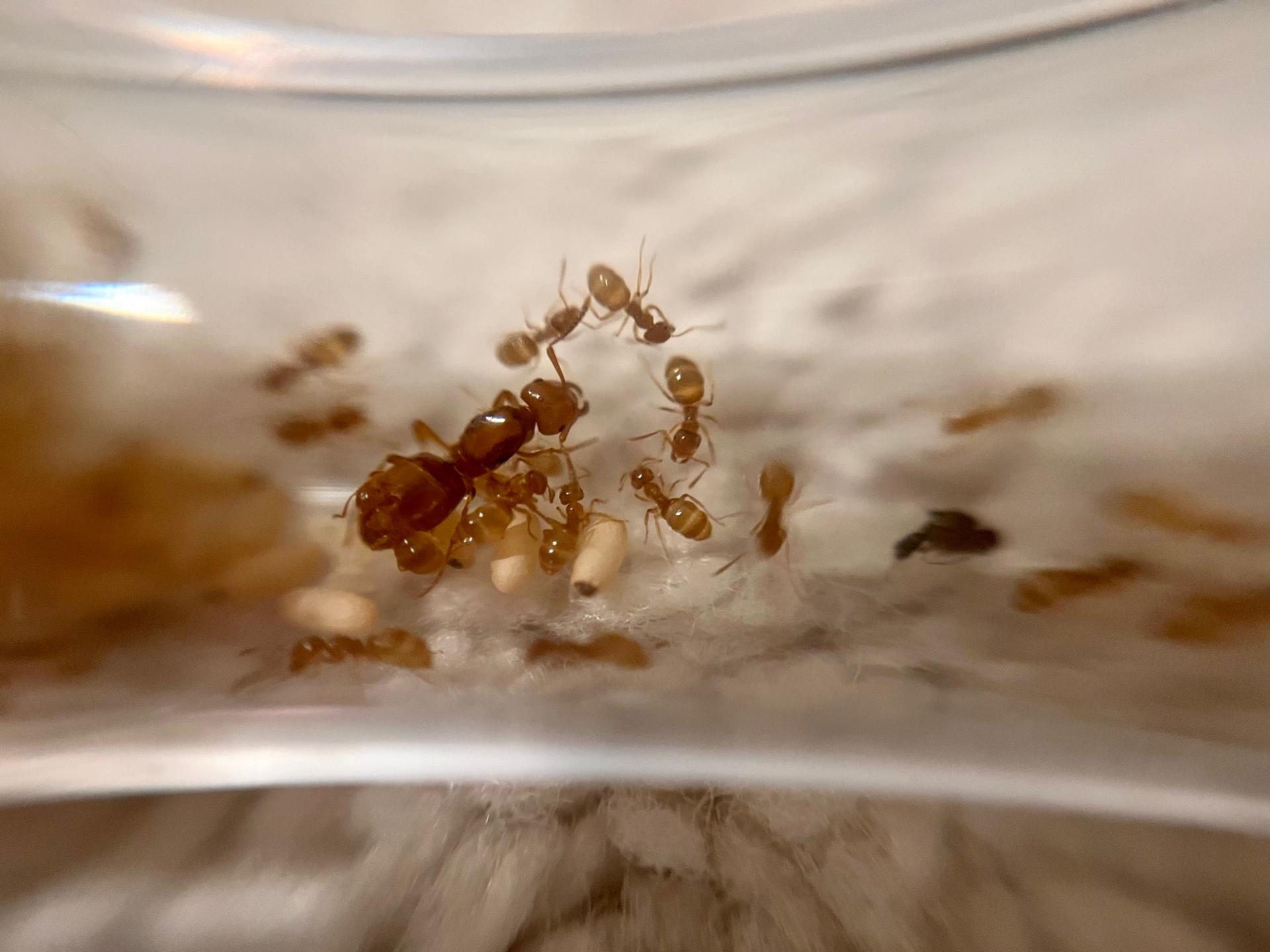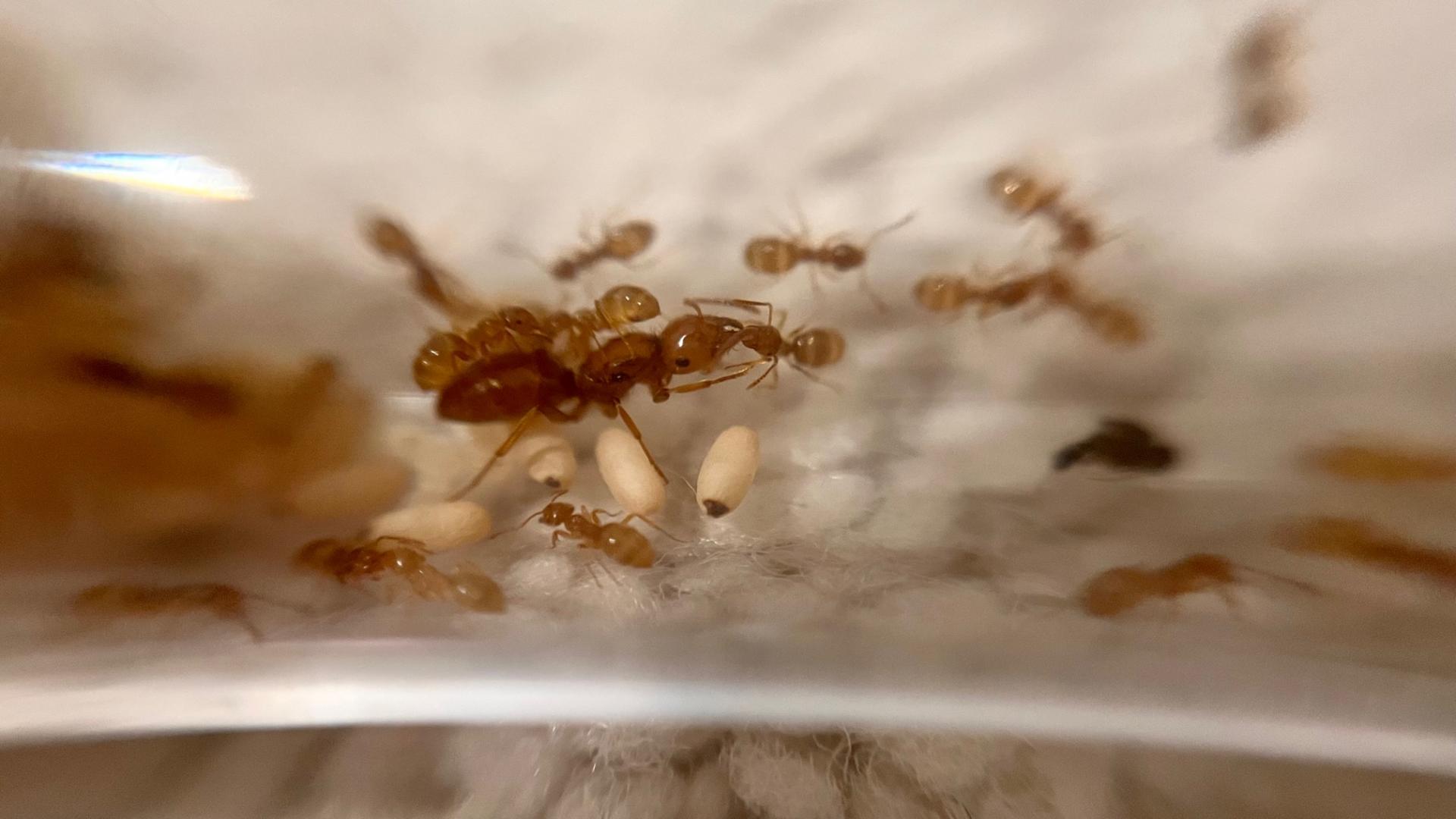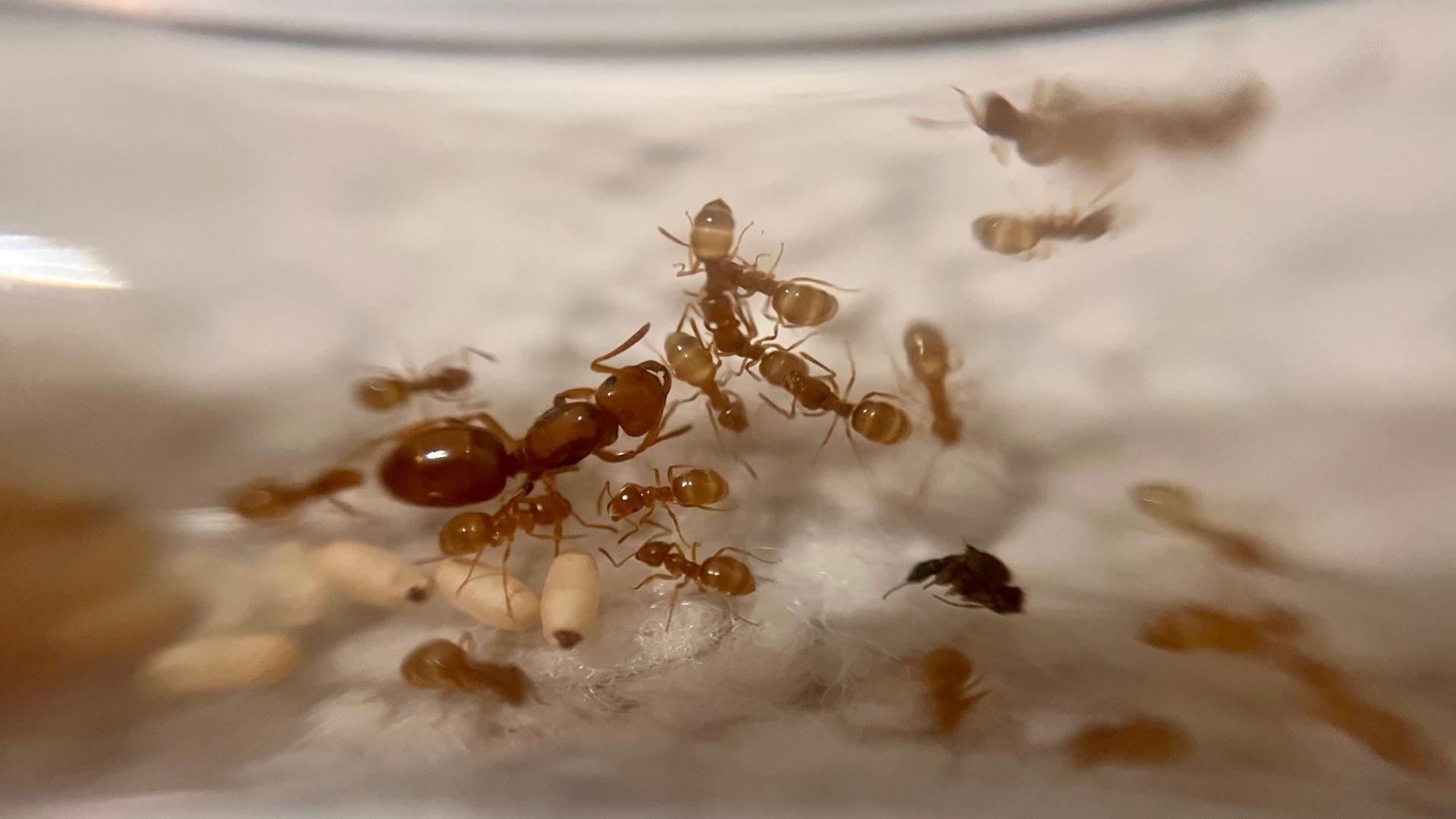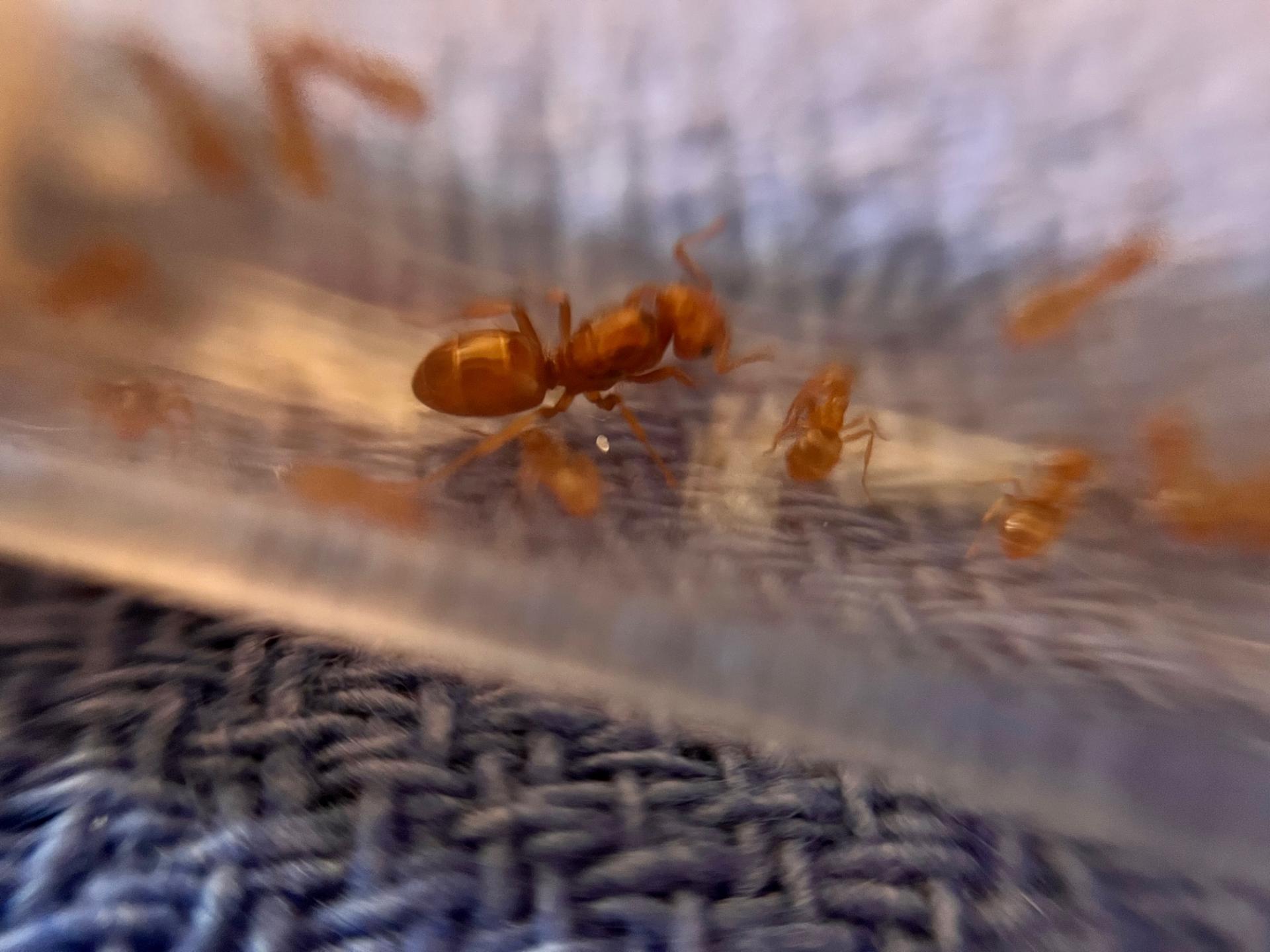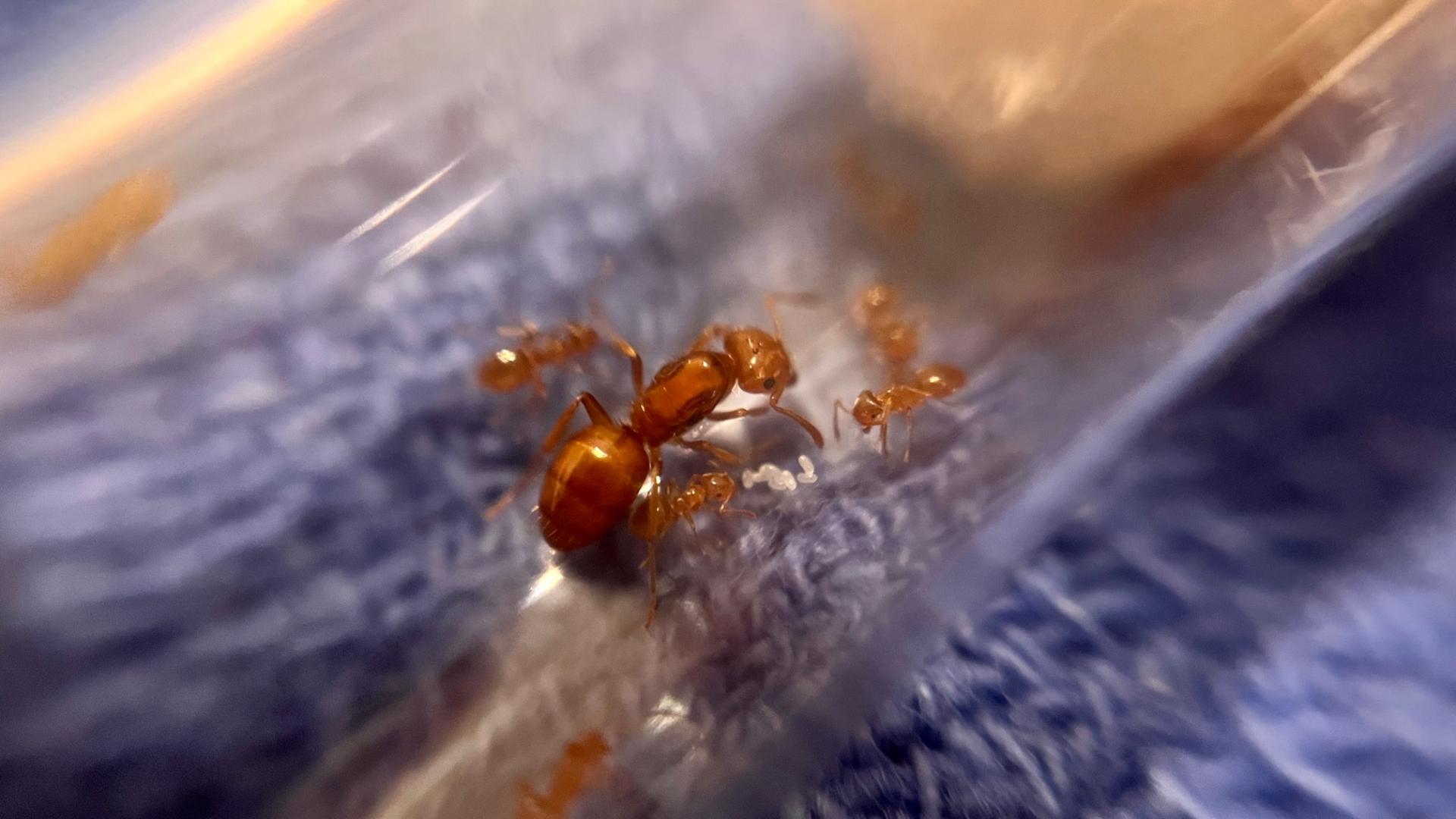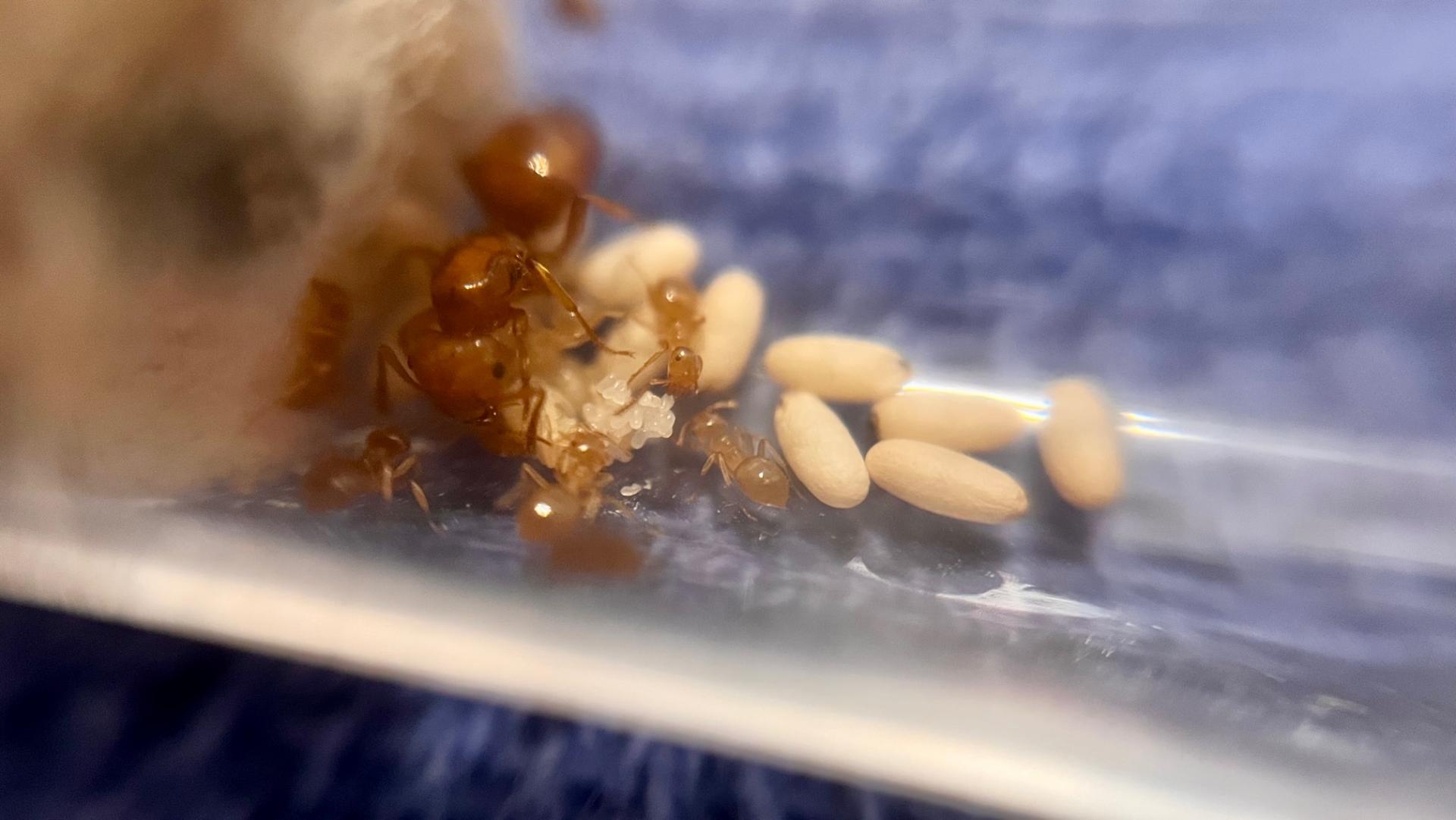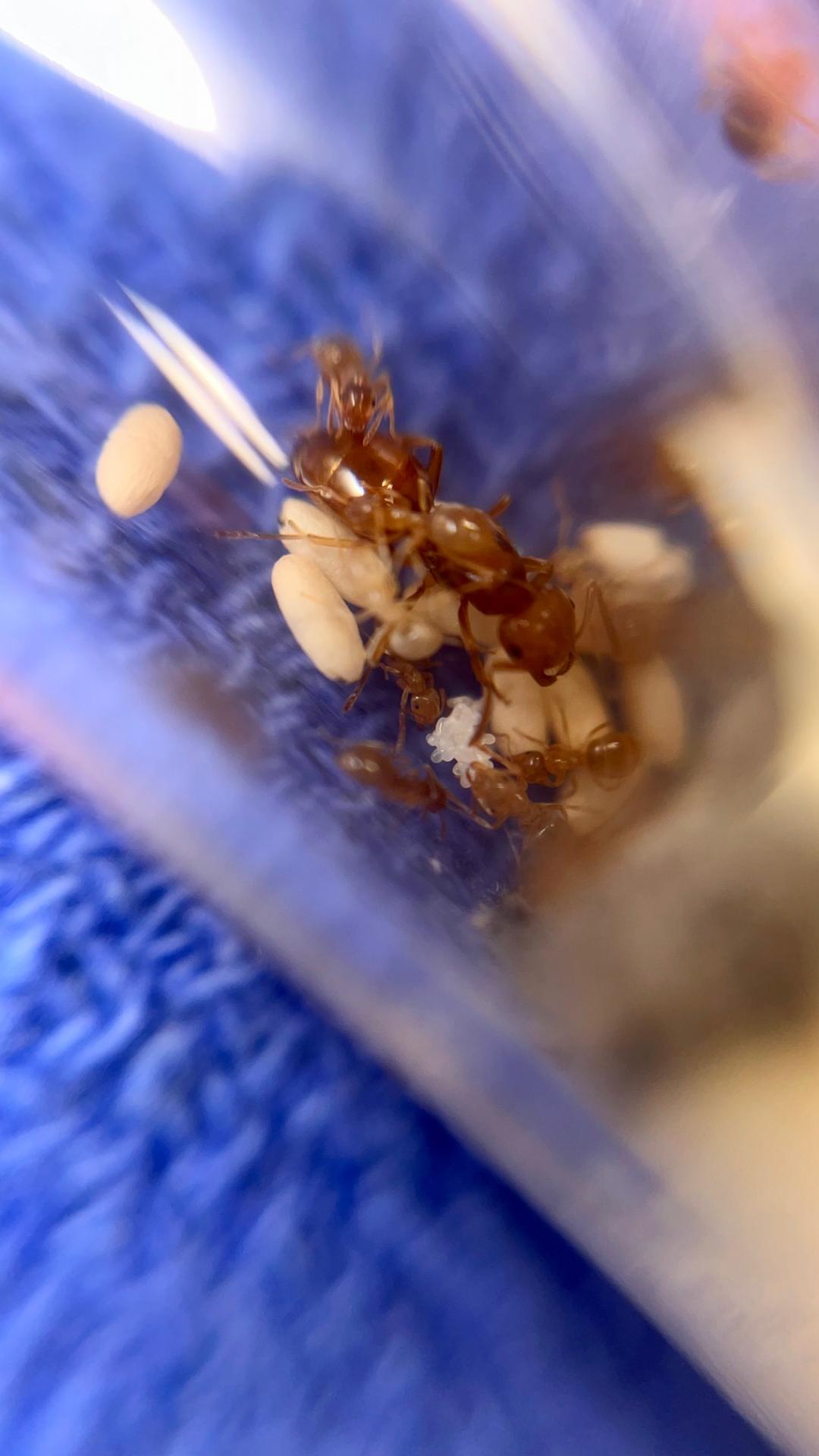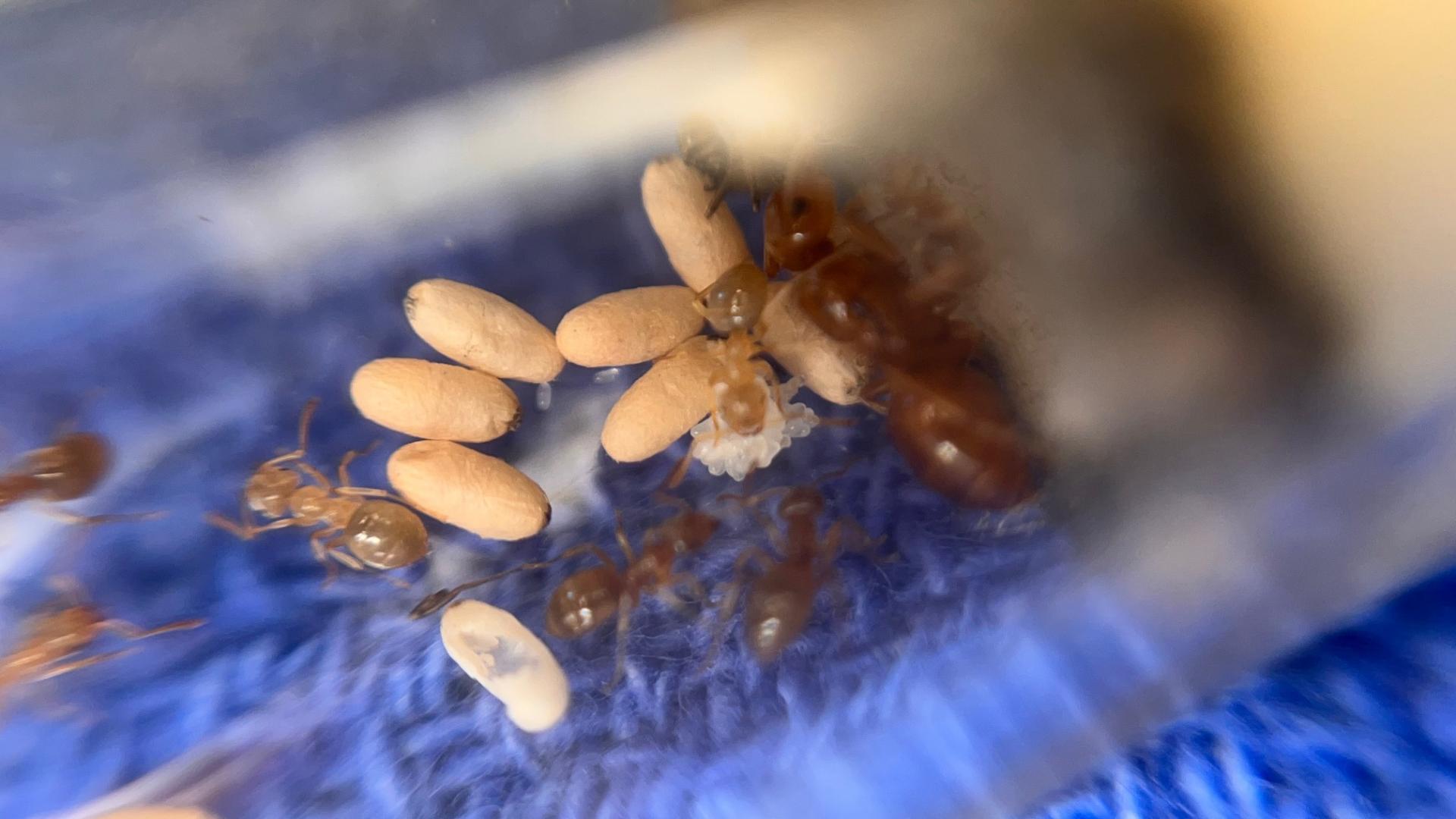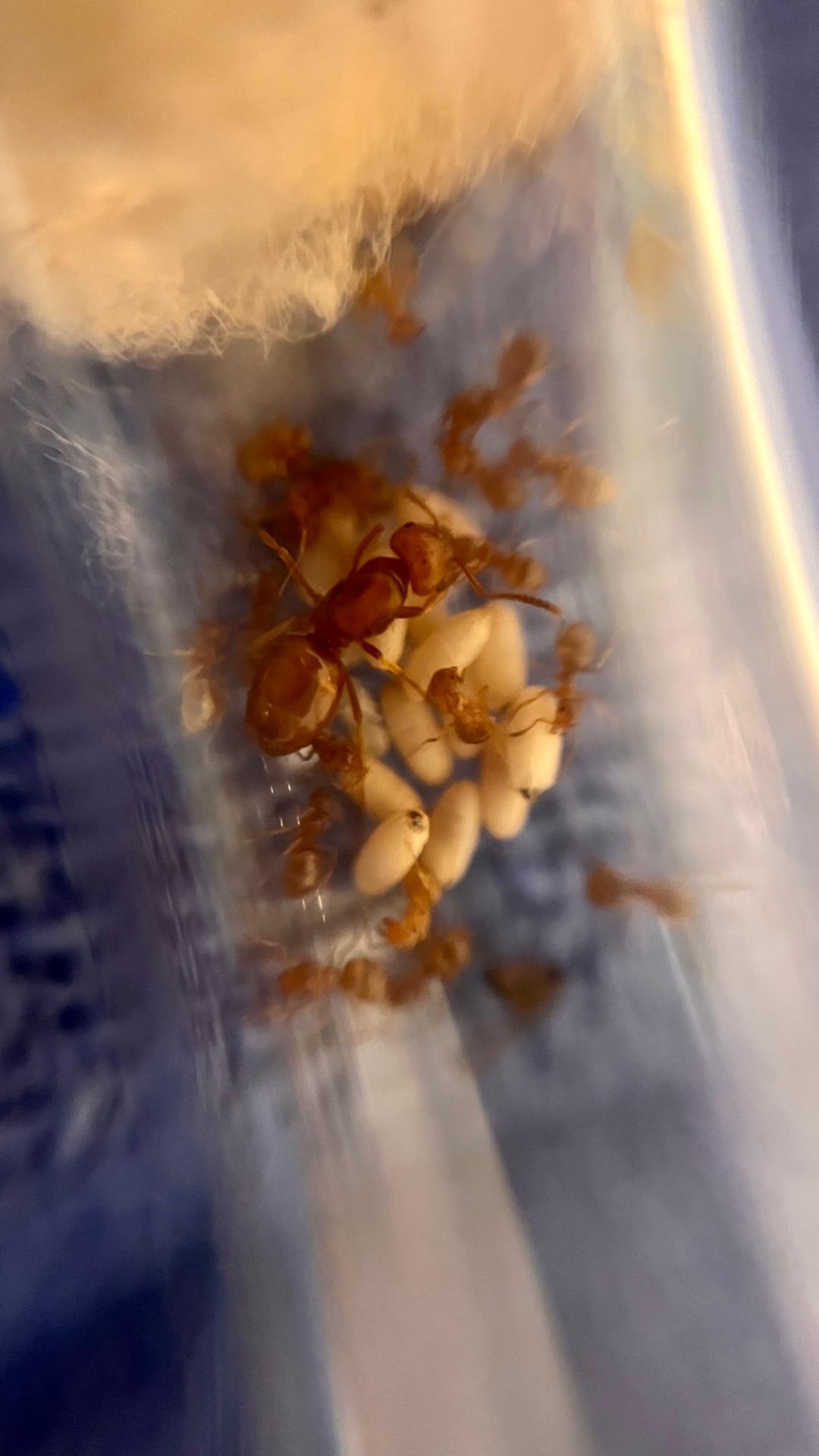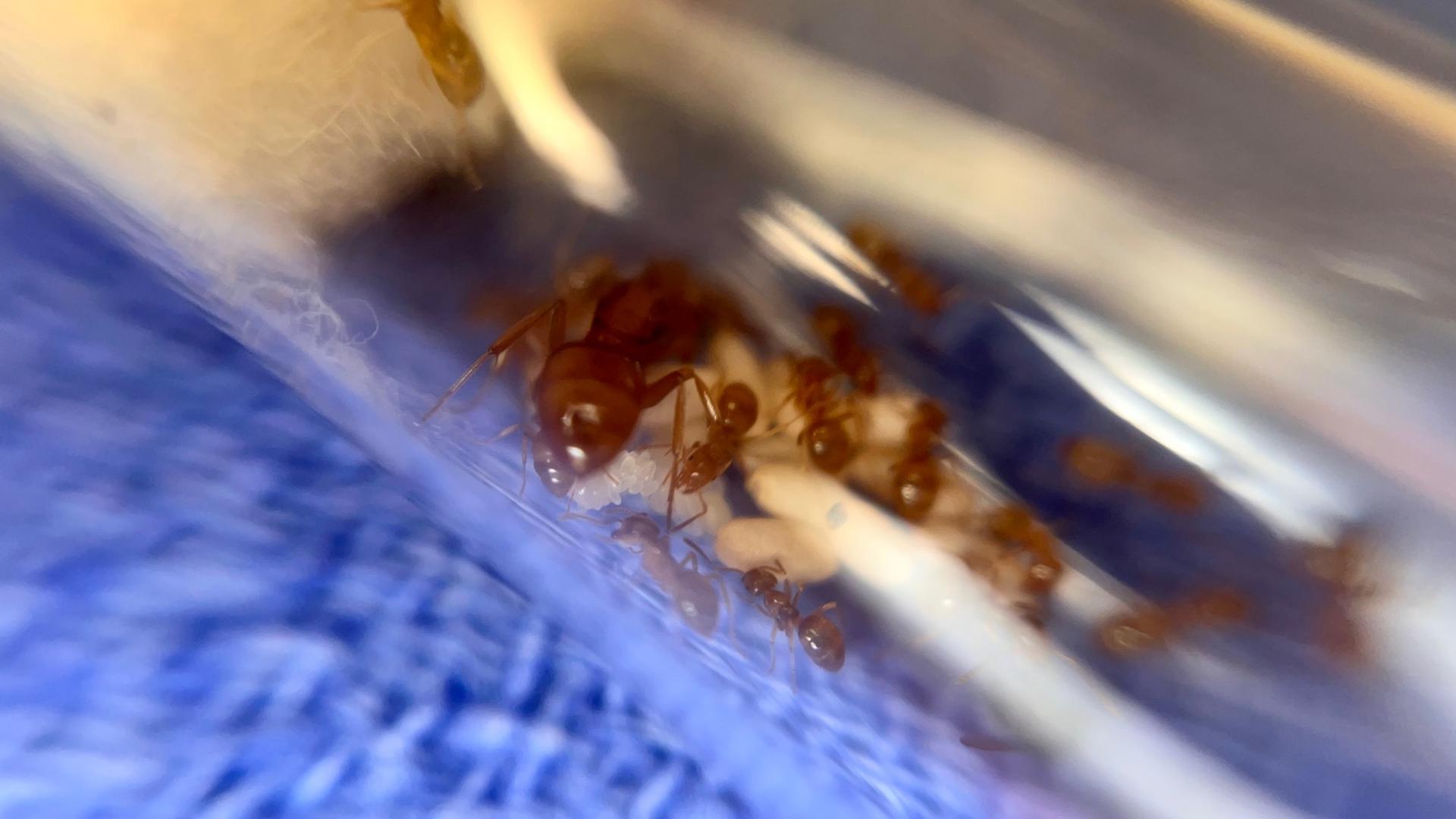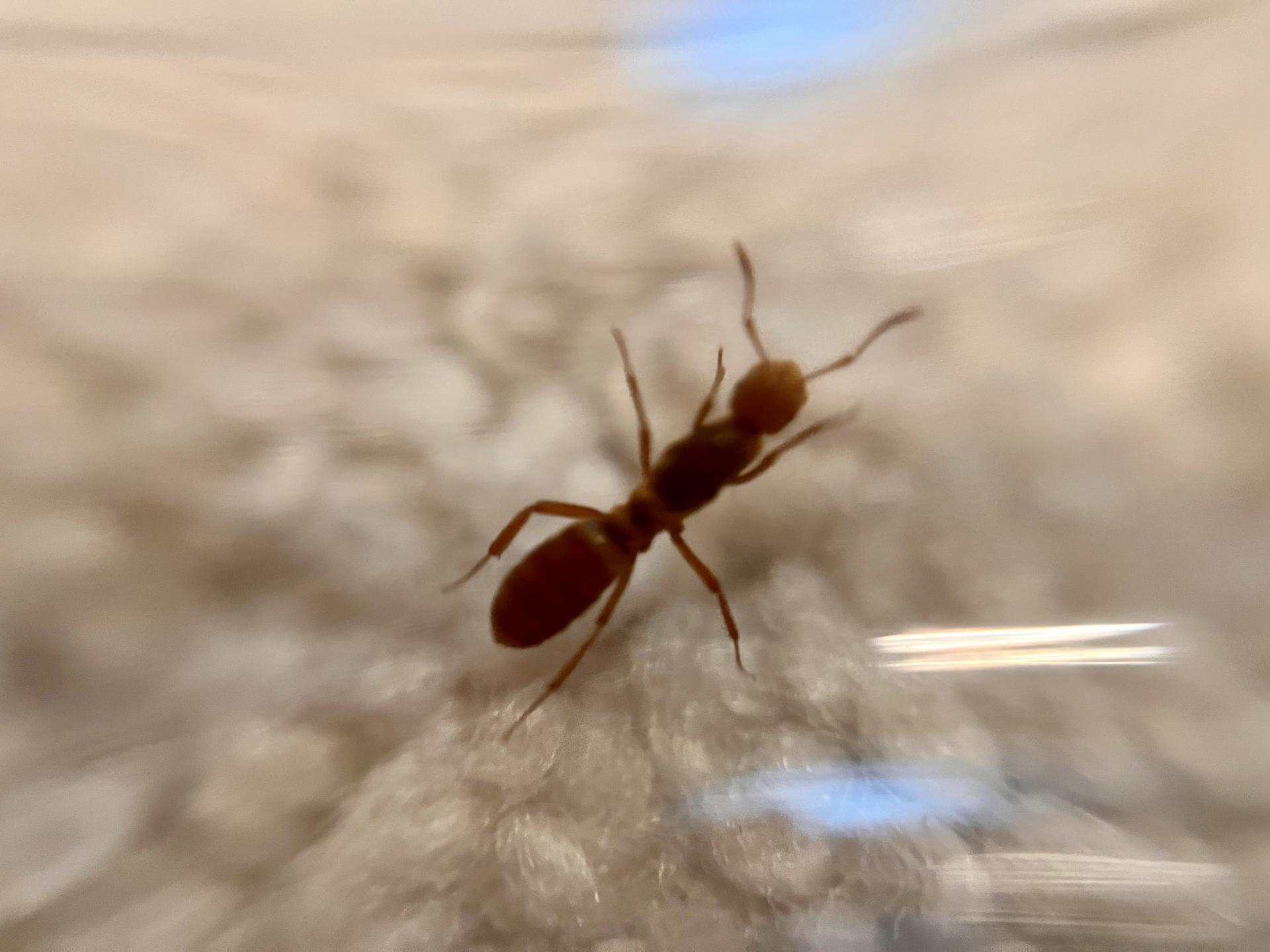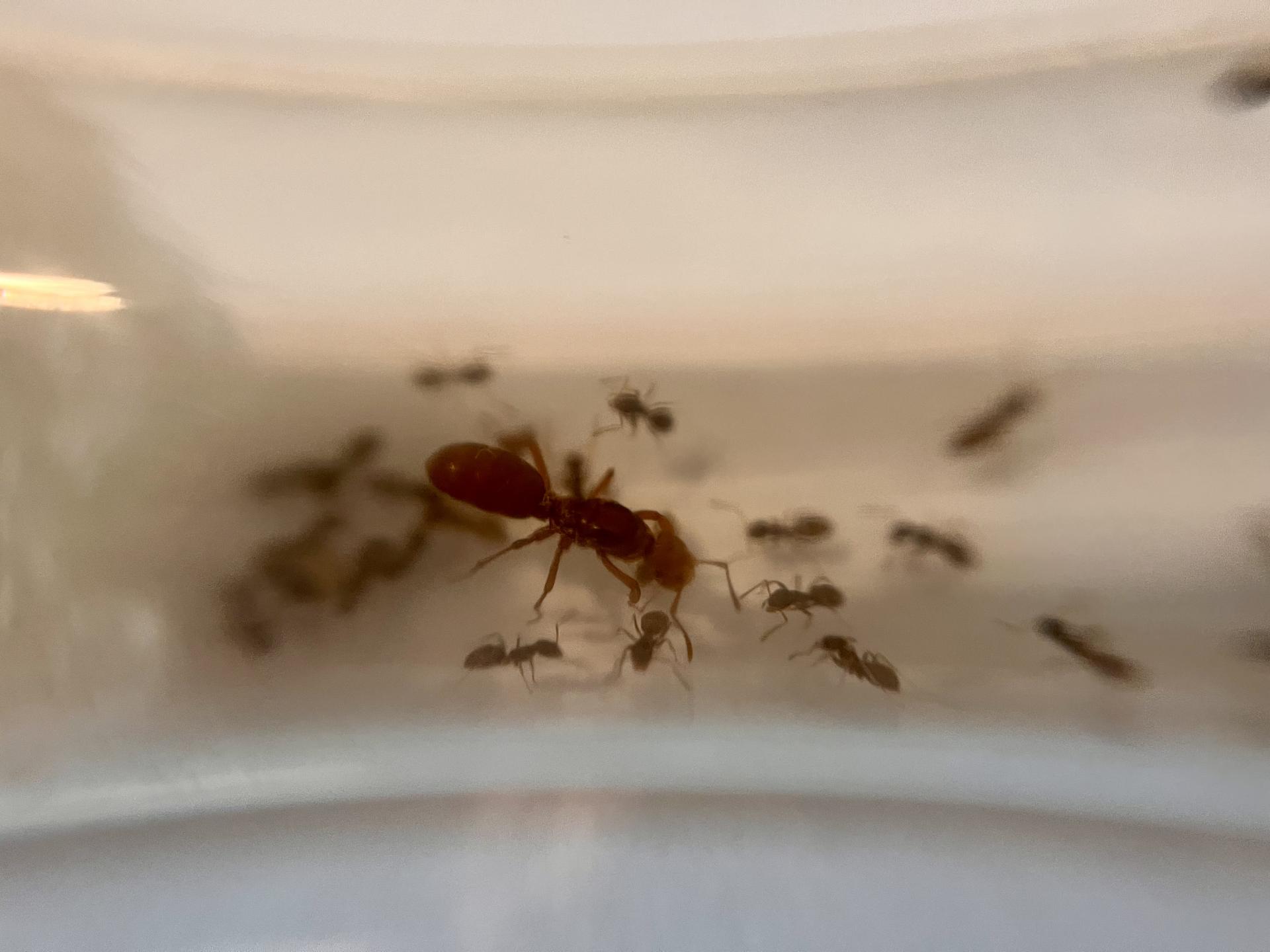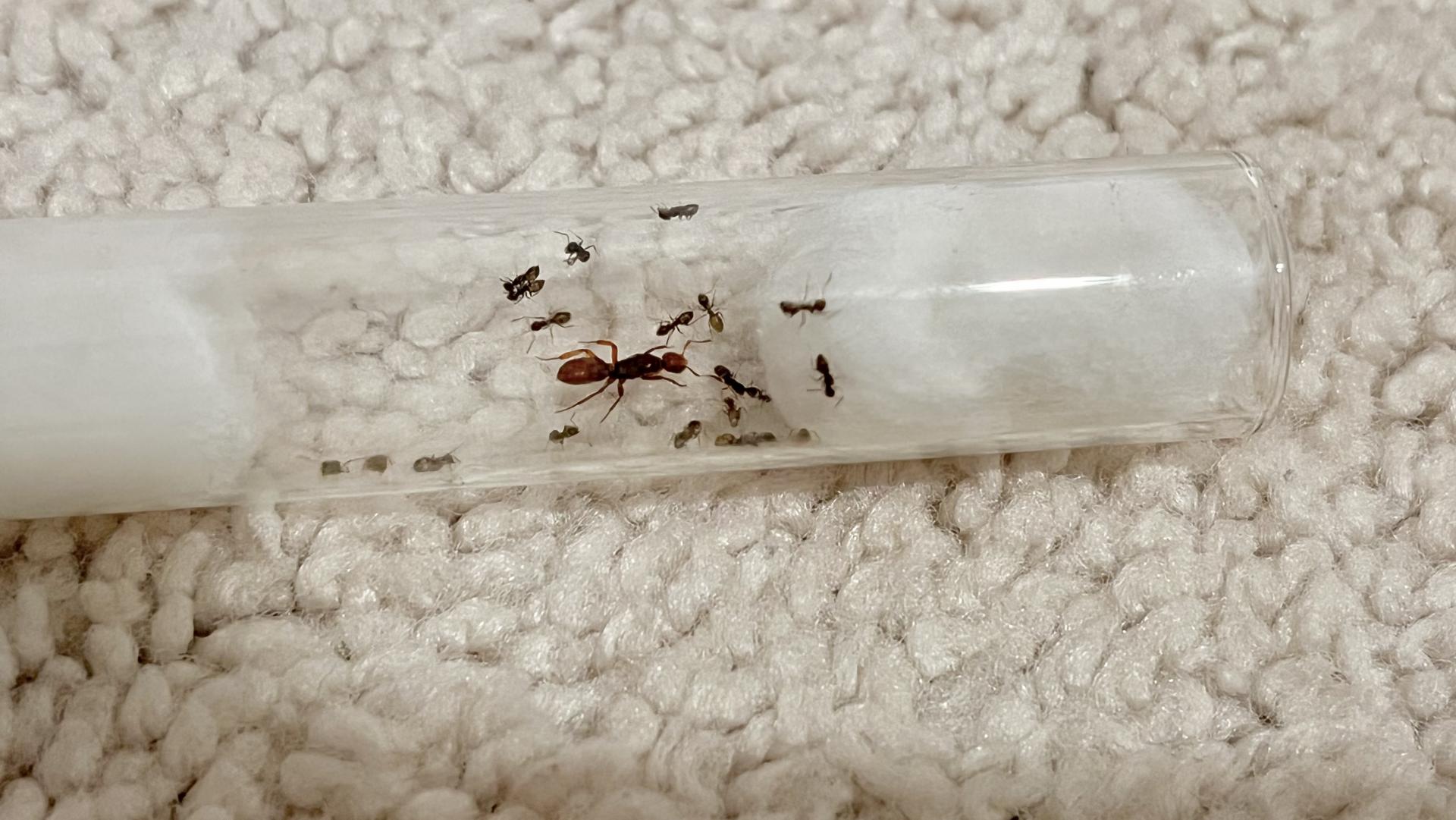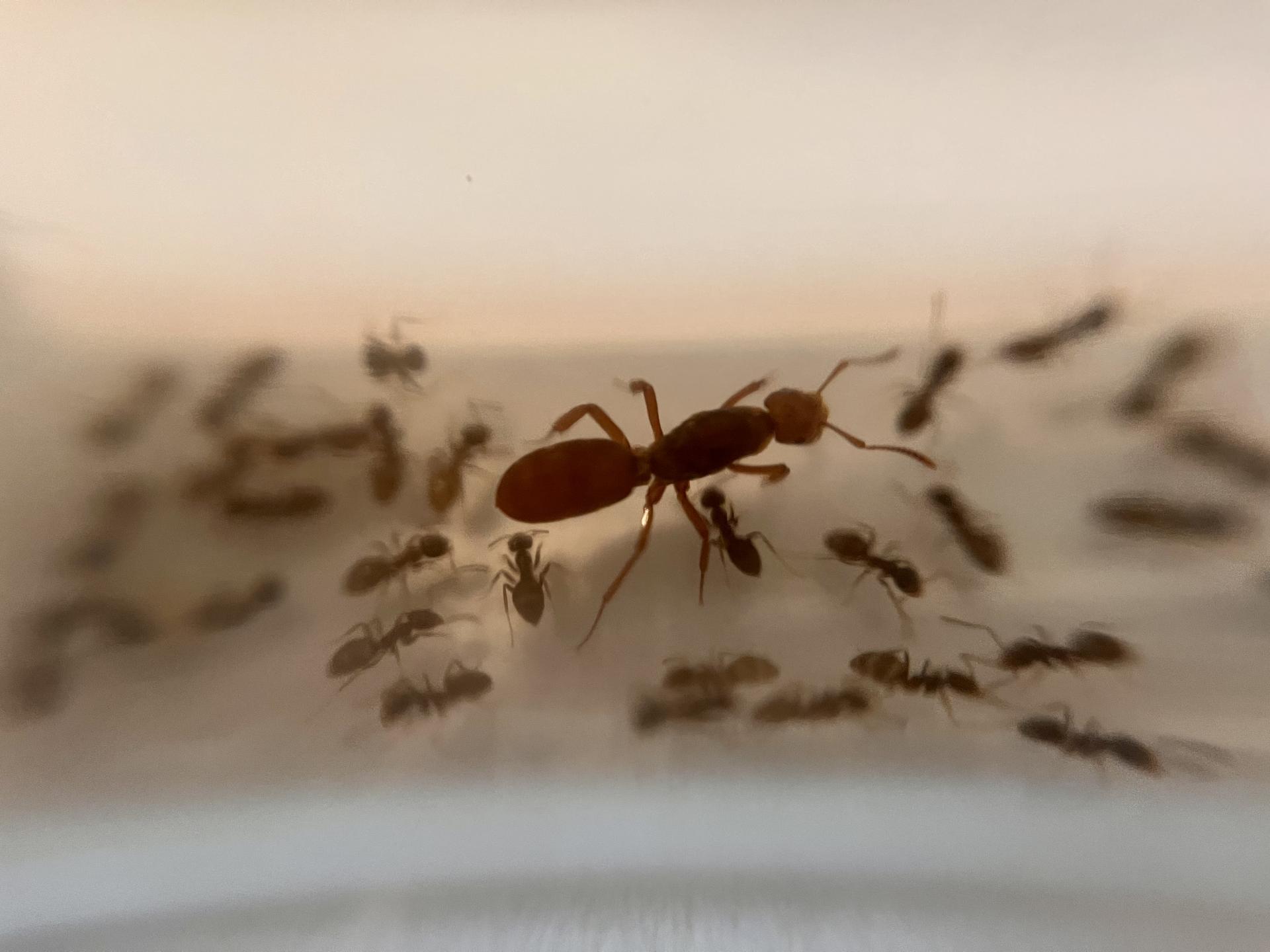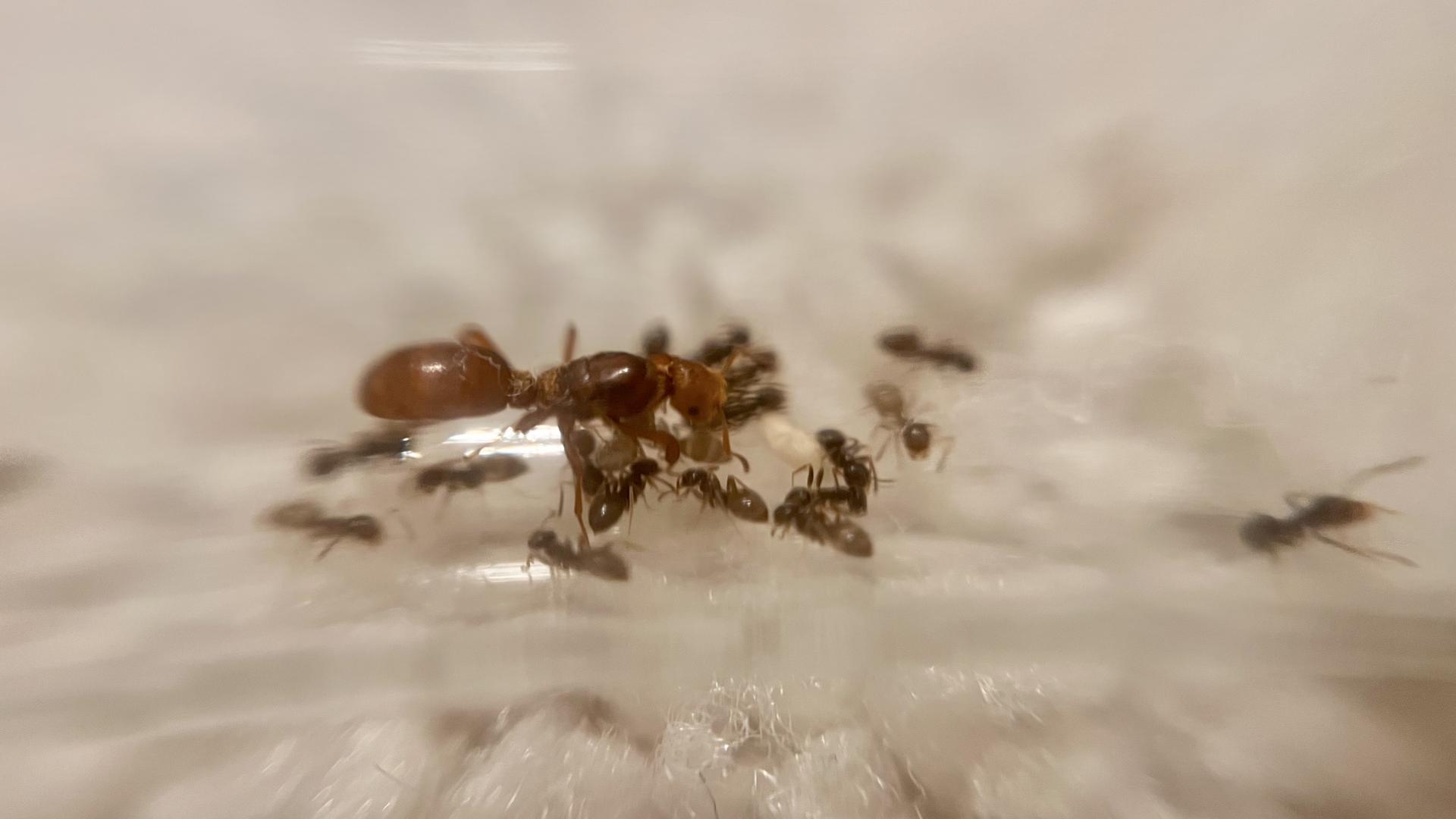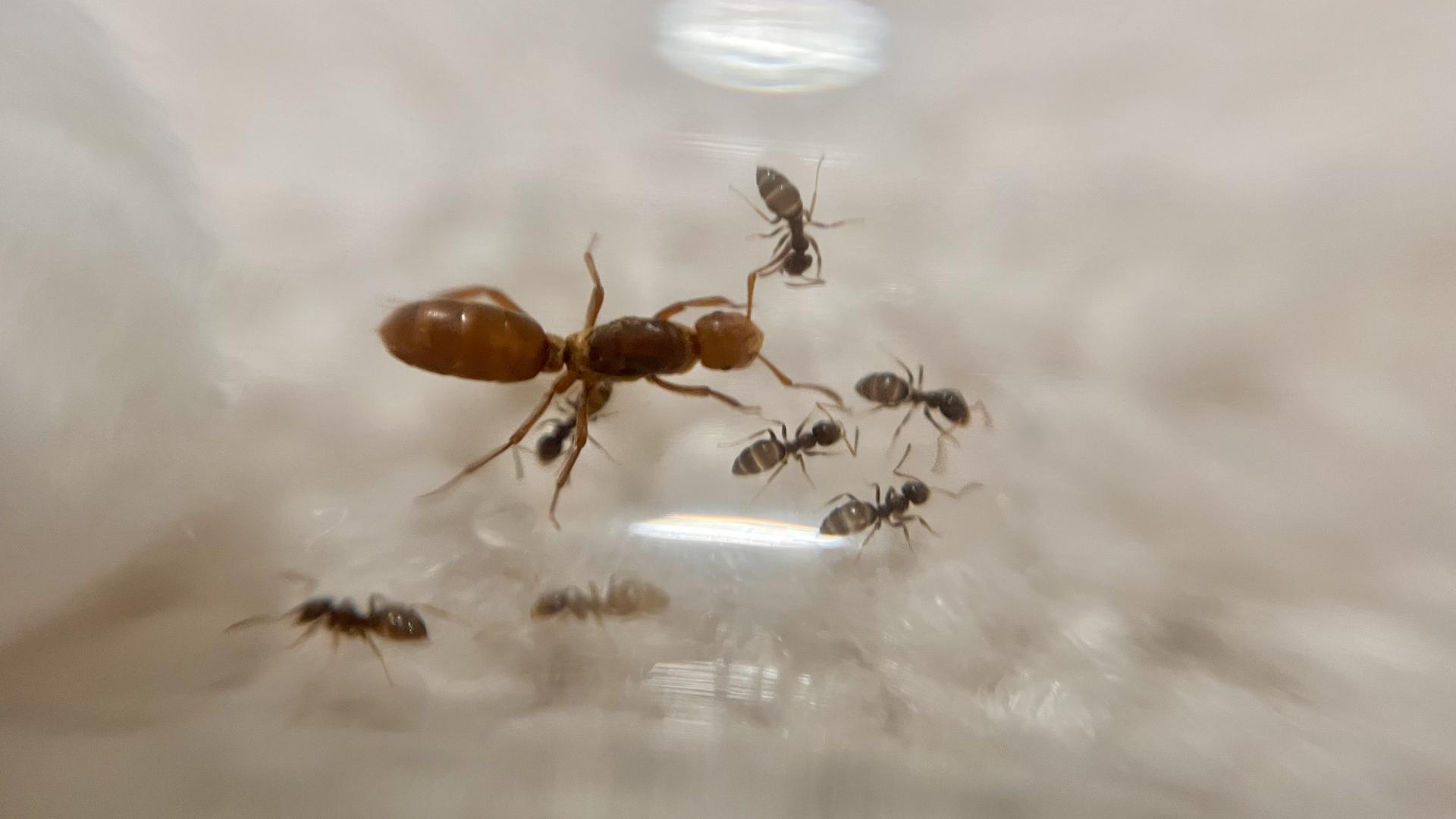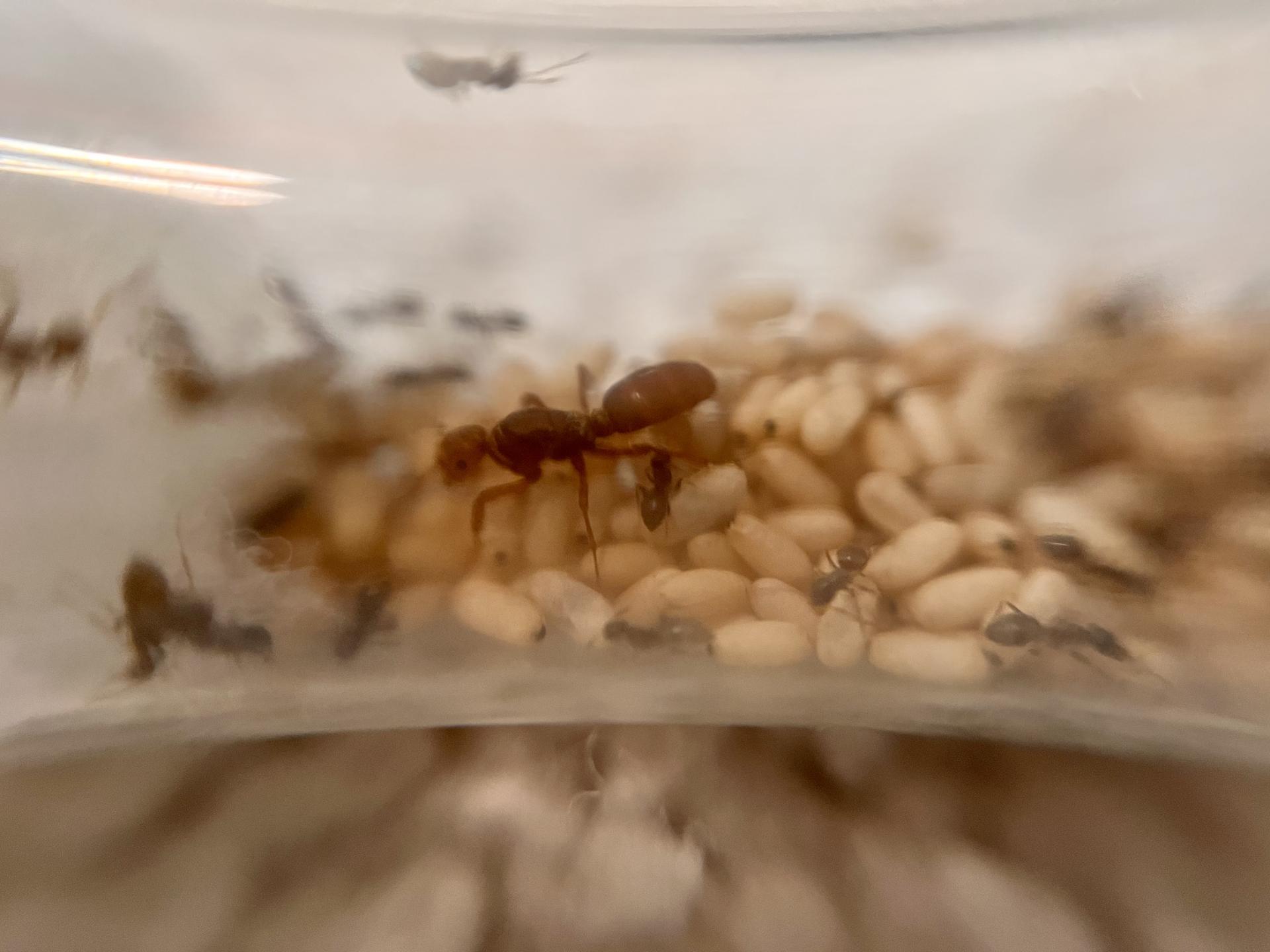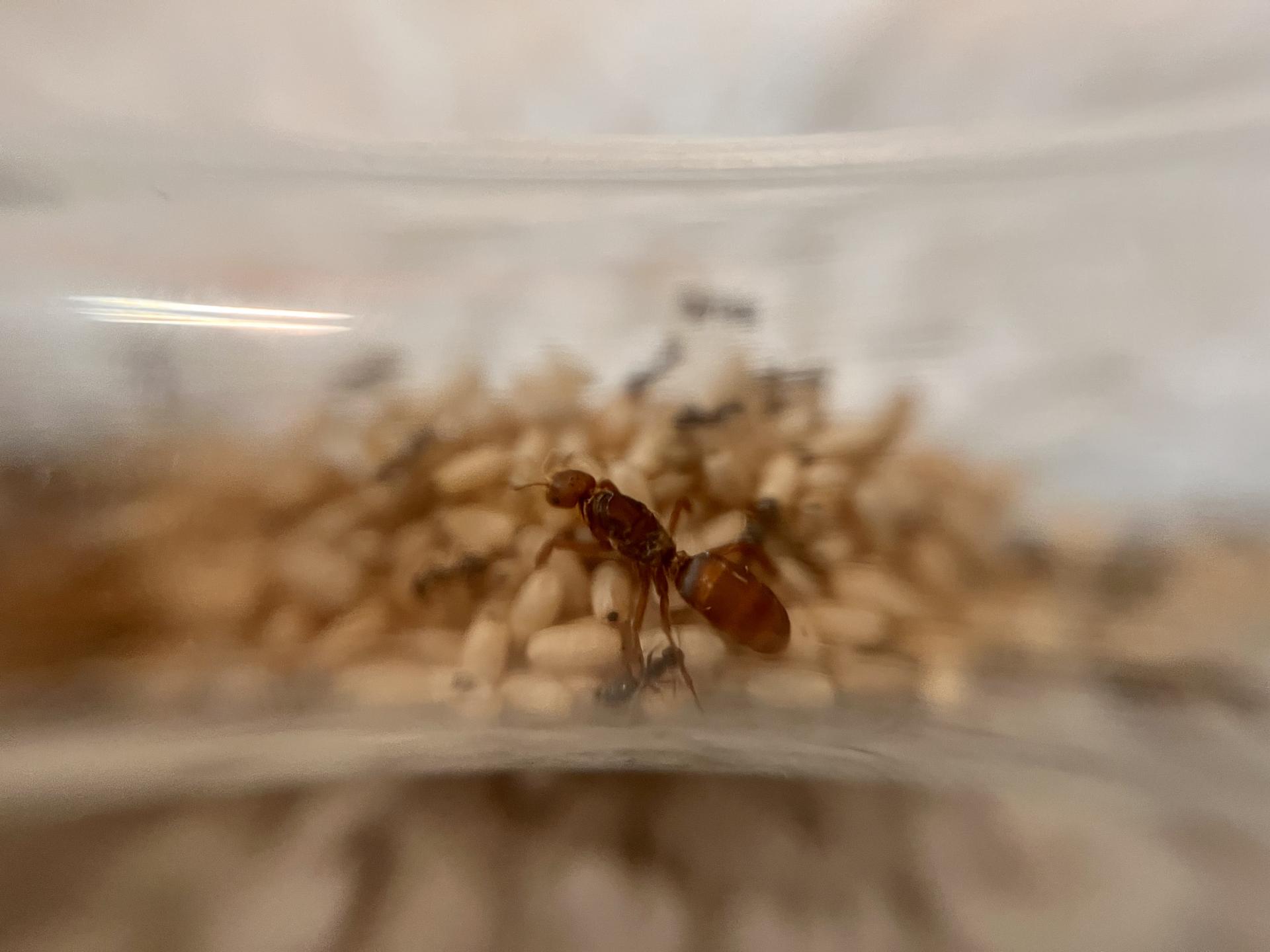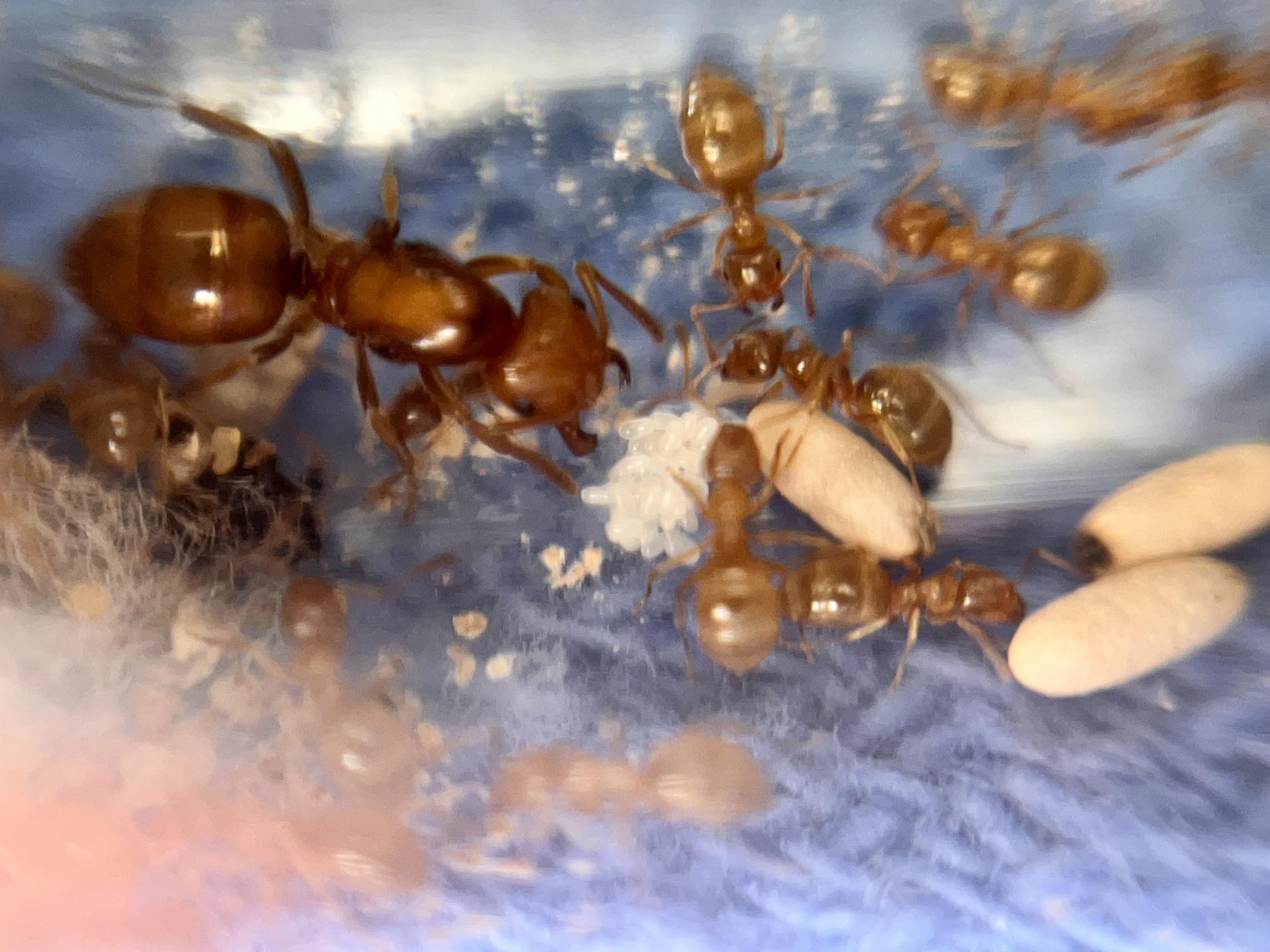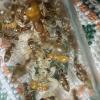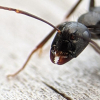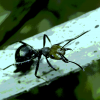Lasius Aphidicola
- These queens usually fly in the late summer/fall however you can find them under rocks and in rotten logs throughout the winter. In the spring they usually come out of diapause and start looking for hosts. I found a few of these queens in the spring around Late marsh/April 2022. I should have started a journal then but forgot. This is my first year keeping lasius parasites so had to learn a bit from more experienced ant keepers. These usually parasitize lasius americanus or neoniger. I kept the queens alive by giving them some sugar water until I was able to find hosts. It was actually harder to find hosts for them in the spring. Once the weather warmed up a bit, I was able to find lasius americanus hosts. Ideally you want to have lots of hosts 50+ with a good amount of pupae. I was not able to find these many hosts and end up with about 30 or so hosts and no pupae.
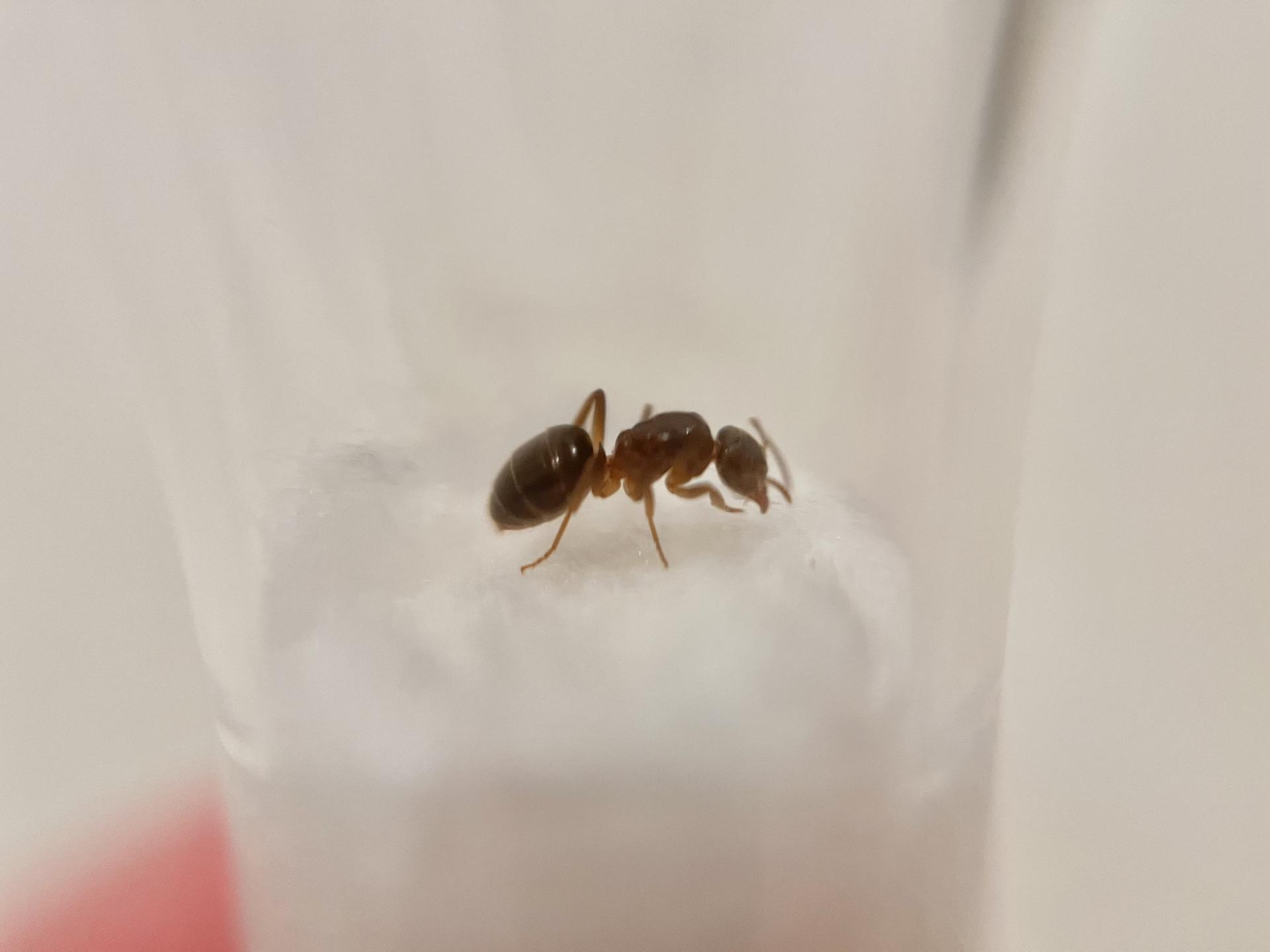
- I introduced hosts slowly a few at a time until the queen was not actively fighting them. Certain queens would fight to the death. A few dead workers is very common however it is queen dependent. Some queens were much more "friendly" and caused no host worker casualties.
- I kept the queen and hosts inside a sealed test tube set up so they would be forced to interact with each other with no place to run. If you give them an outworld, the queen would just run away and hide in a corner and there would be no acceptance.
- I fed them sugar water from time to time. No protein is needed at this stage since there are no brood to care for. Some queens were tolerated and accepted much quicker than other queens in my experience. Some queens never settled down and kept killing workers while others were accepted within a few days.
- Then the waiting game until the queen produces eggs. Usually adult workers will live long enough to rear first generation of biological workers. At this time you can always find host pupae and add them so they will have constant supply of hosts. I did not add any pupae. Some ant keepers swear that the more hosts and pupae you give the faster the queen will lay eggs. It is probably true but also queen dependent. My colony had 30 host workers and no pupae and the queen started laying within 1 week or so after being accepted.
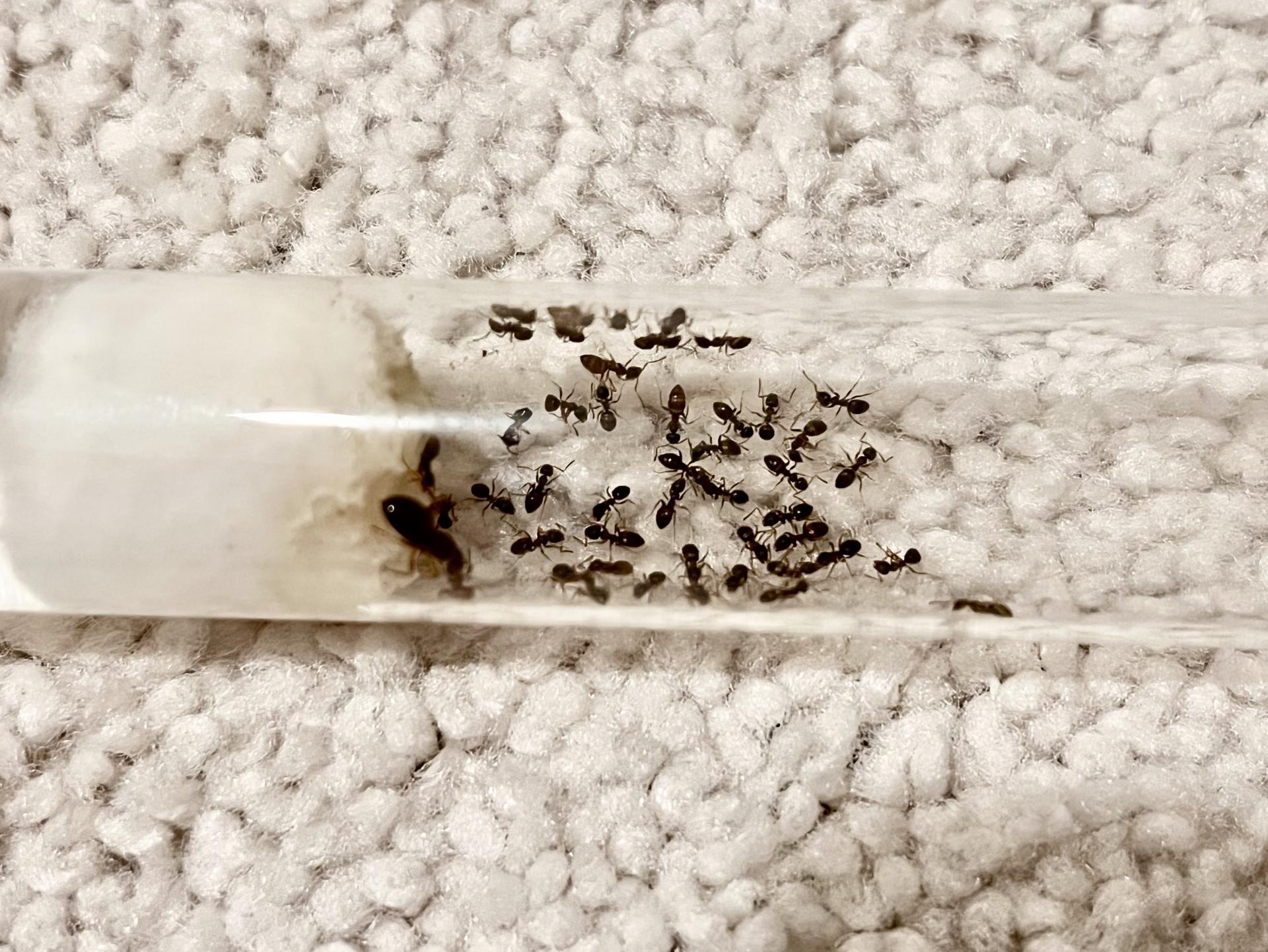
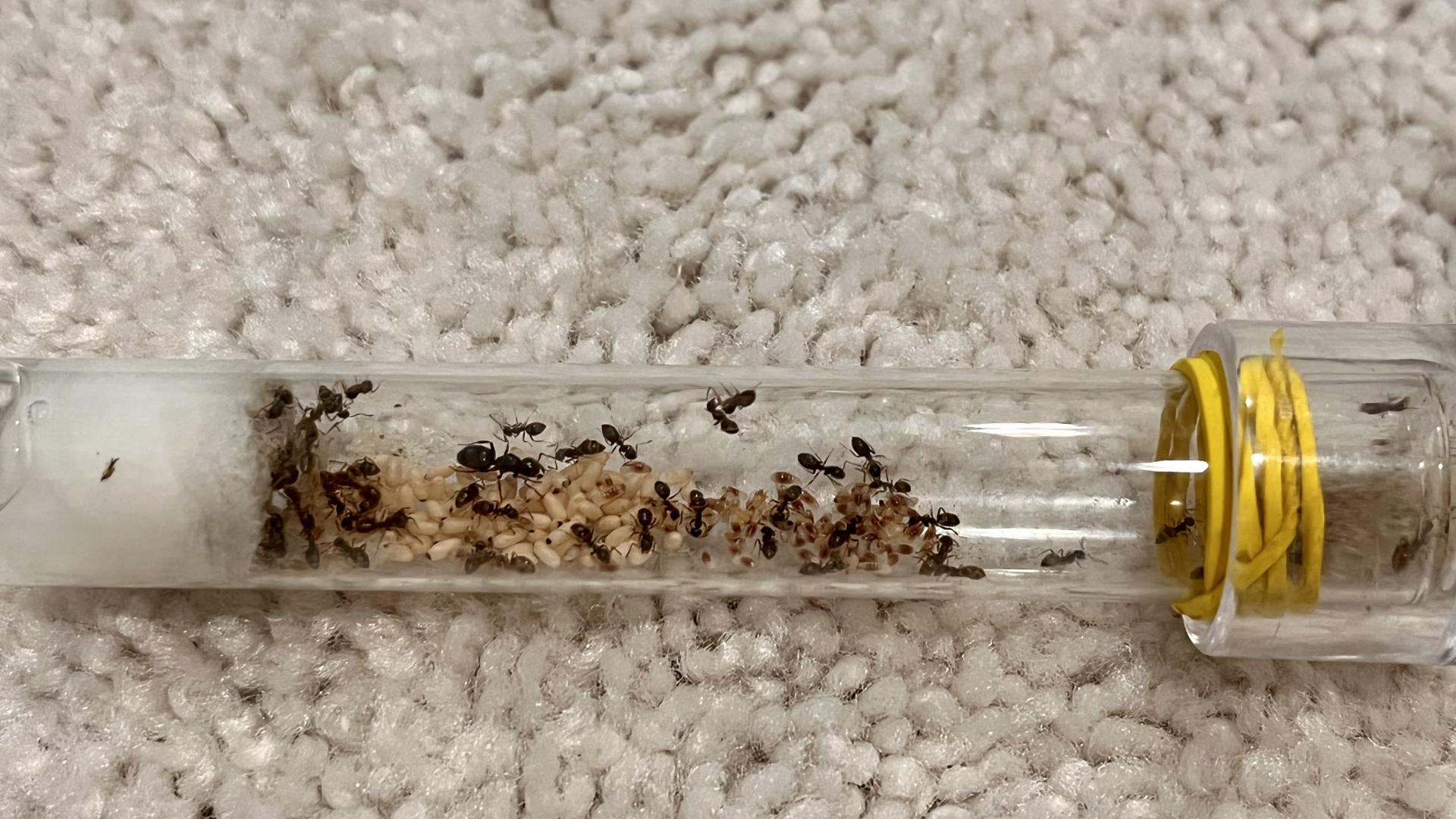
- The longest period was probably waiting for the eggs to hatch. I started giving proteins once eggs hatch. It took almost 2 months from egg to biological workers. These are quite small ants but it took quite a while to get workers. A few host workers did die but even after 3-4 months I still had quite a few hosts workers left now.
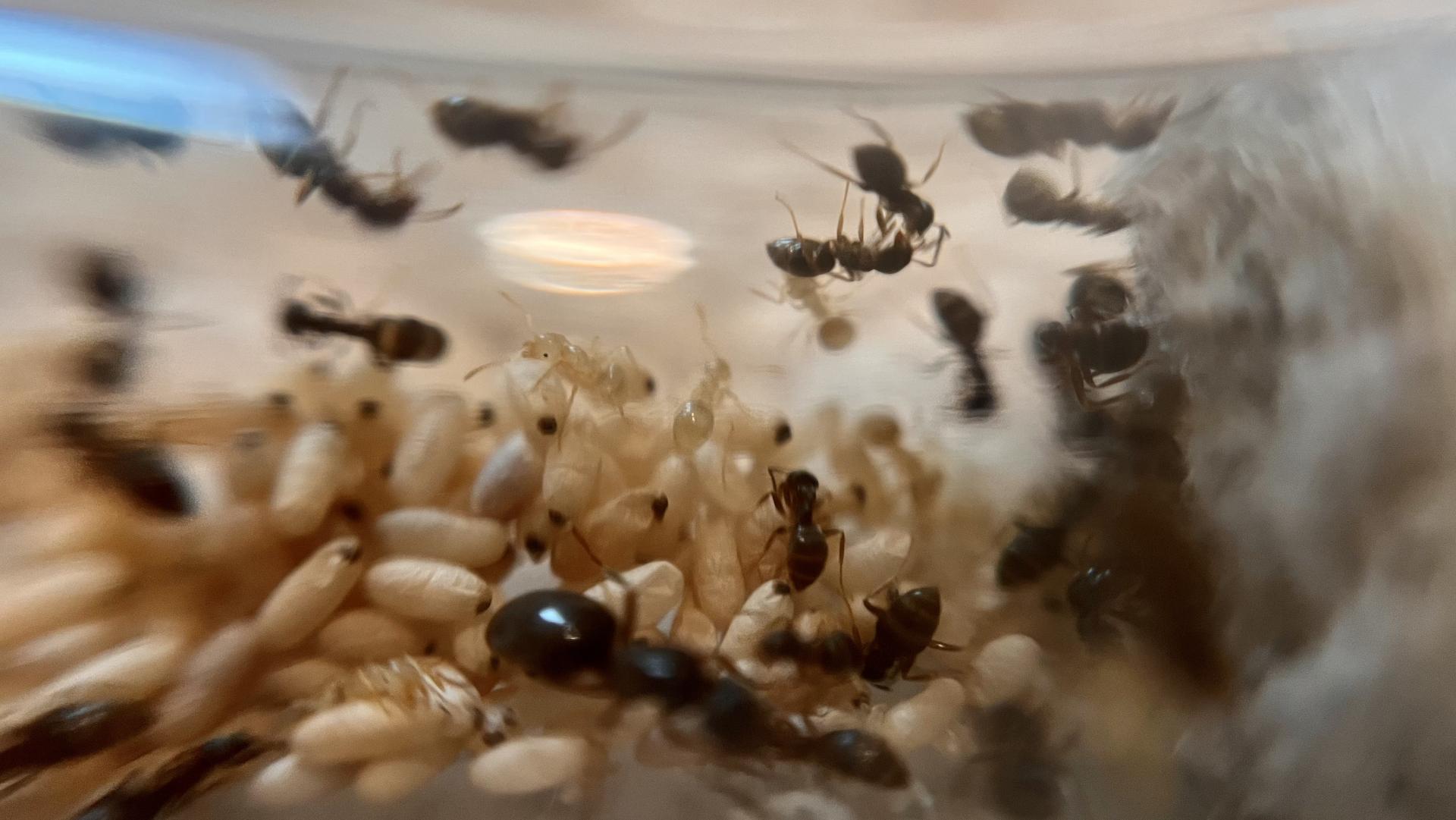
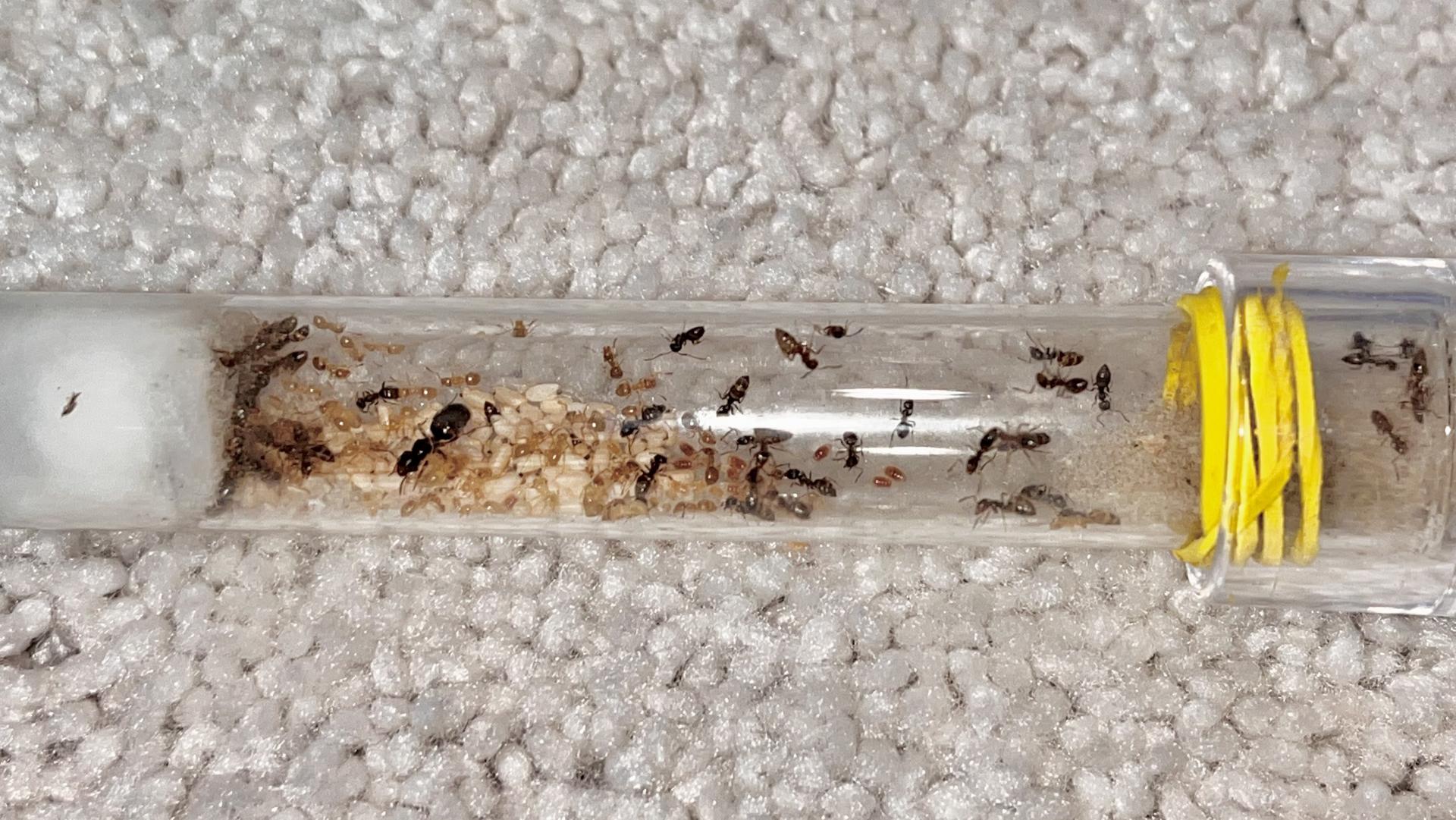
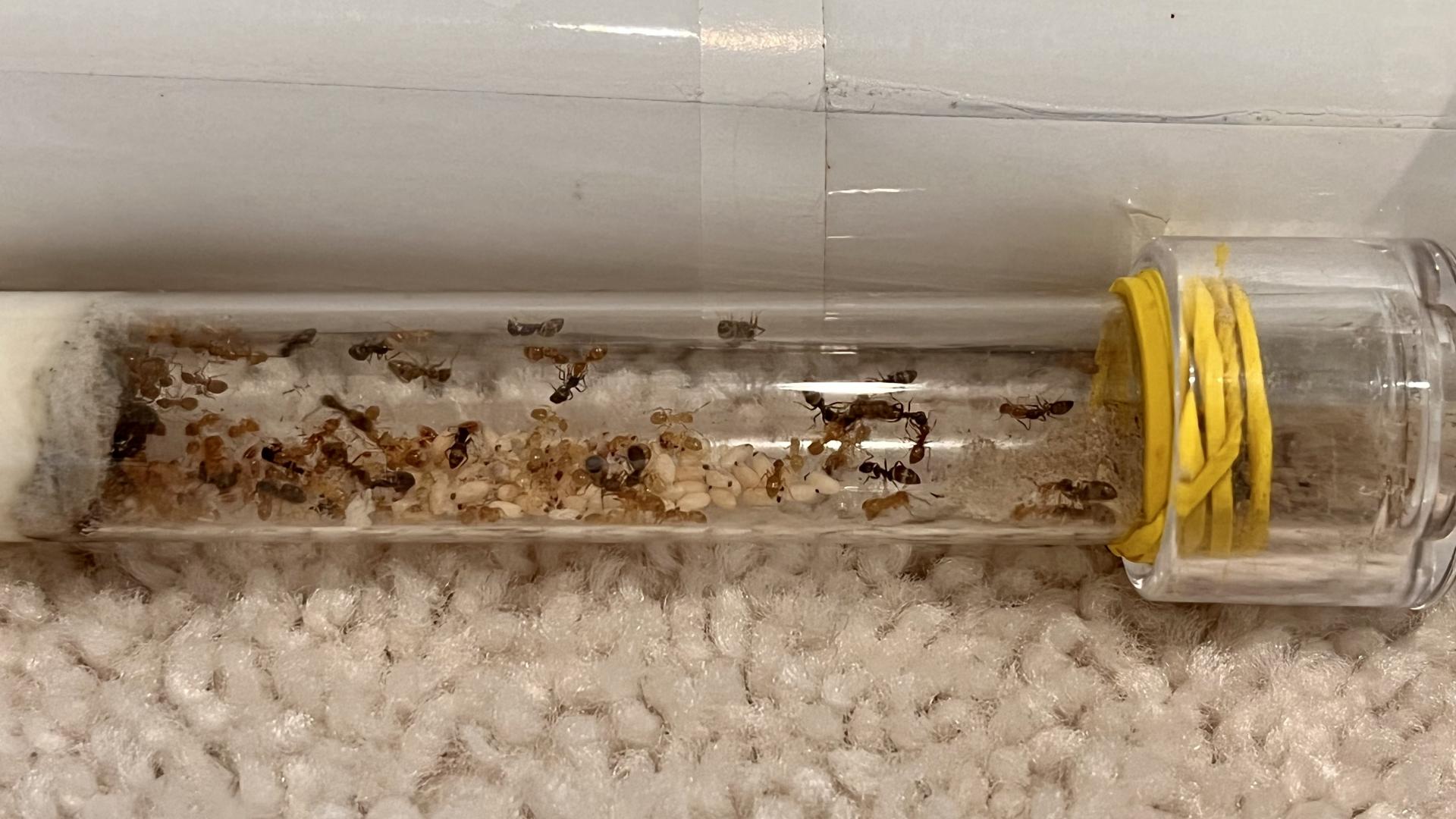
- Once biological workers, this colony is being kept like any other lasius colony. Another reason I started this colony was to be able to use them as hosts for other lasius parasites.
- This is their current state. Overall, I was very successful with aphidicola, out of 3 queens I providede hosts to 2 of the queens successfully founded to biological workers.
